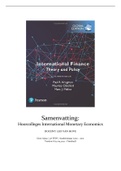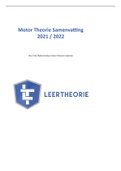Resume
Samenvatting International Monetary Economics HOC (in English)
- Établissement
- Vrije Universiteit Brussel (VUB)
Uitgebreide samenvatting van de Hoorcolleges voor het vak International Monetary Economics. Geschikt voor studenten uit de 3de Bachelor Toegepaste Economische Wetenschappen en Handelsingenieur. Gegeven door L. Van Hove aan de Vrije Universiteit Brussel in het academiejaar . De samenvatting is i...
[Montrer plus]













